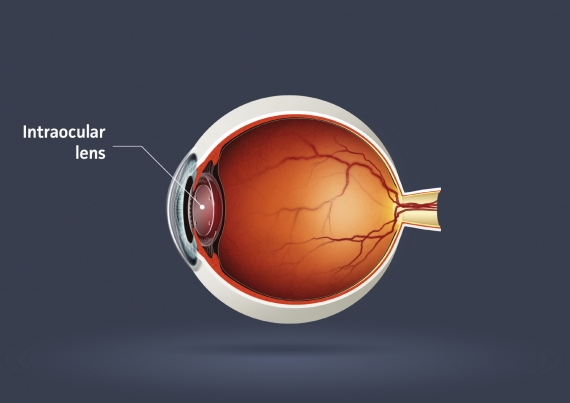Laser Cataract Surgery
If you are experiencing the onset of cataracts, your vision and quality of life may have deteriorated. Fortunately, recent innovations, such as bladeless laser-assisted cataract surgery, make it possible for cataracts to be removed with greater precision and accuracy.
Dr. Trevor Elmquist of Elmquist Eye Group in Fort Myers and Cape Coral, Florida, is among a limited number of cataract surgeons in the U.S. to offer treatment with the LenSx® femtosecond laser, the first femtosecond laser system to receive FDA approval for cataract surgery.
Do You Think You Have a Cataract?
 If you have trouble reading, seeing in the distance, or difficulty when driving at night, you may have a cataract. Cataracts are an inevitable part of the aging process, but many people don’t even realize they have one until it is discovered during a routine eye examination.
If you have trouble reading, seeing in the distance, or difficulty when driving at night, you may have a cataract. Cataracts are an inevitable part of the aging process, but many people don’t even realize they have one until it is discovered during a routine eye examination.
Although most cataracts are age-related, you don’t have to be a senior citizen to get one. Individuals can have an age-related cataract in their 40s and 50s, but they are usually small and do not affect vision. It is after the age of 60 that cataracts are most responsible for diminished vision.
Traditional vs. Laser-Assisted Cataract Surgery
With traditional cataract surgery, incisions made in the cornea to remove the cataract are created with a hand-held blade. In the laser-assisted procedure, the precision and accuracy of the beam of laser light, accompanied by a computer-guidance system controlled by Dr. Elmquist, create the incision. The combination of Dr. Elmquist’s surgical skills and the state-of-the-art laser technology can deliver extraordinary results.
When a patient has astigmatism, traditional cataract surgery requires the surgeon to again use a hand-held blade to create tiny incisions in the outer margins of the cornea to correct it. With bladeless laser cataract surgery, these incisions are performed with the laser.
In both the traditional and laser-assisted procedures, the cloudy lens has to be fragmented to make it easier to remove. In the traditional procedure, ultrasonic energy is used to accomplish this. In the laser-assisted procedure, the laser both fragments and softens the cloudy lens, which requires less energy. This causes less stress on the delicate fibers and membrane that will hold the new intraocular lens (IOL) in place and may help the surgeon position the replacement lens more accurately.
In both procedures, Dr. Elmquist removes the cataract with an ultrasonic probe and suction and inserts and positions the intraocular lens (IOL) you have selected.
While traditional cataract surgery provides excellent results, the revolutionary bladeless laser-assisted cataract procedure enhances our ability to offer patients at Elmquist Eye Group the best possible visual outcomes.
Dr. E. Trevor Elmquist is proud to be among Castle Connolly Medical Ltd.’s list of America’s Top Doctors in ophthalmology, based on nominations from his peers. He is board certified by the American Board of Ophthalmology and a fellow of the American Academy of Ophthalmology, specializing in general ophthalmology and cataract surgery.
Get in touch with Elmquist Eye Group at (239) 936-2020 to learn more about traditional and laser cataract surgery in Cape Coral, Fort Myers, and throughout Lee County. Dr. Elmquist will examine your eyes, explain the many available options to you, and help you decide if the time is right to improve your vision.
